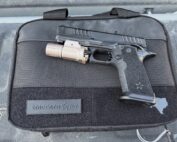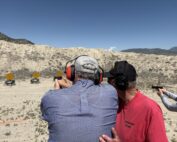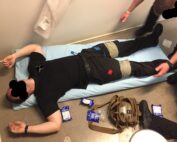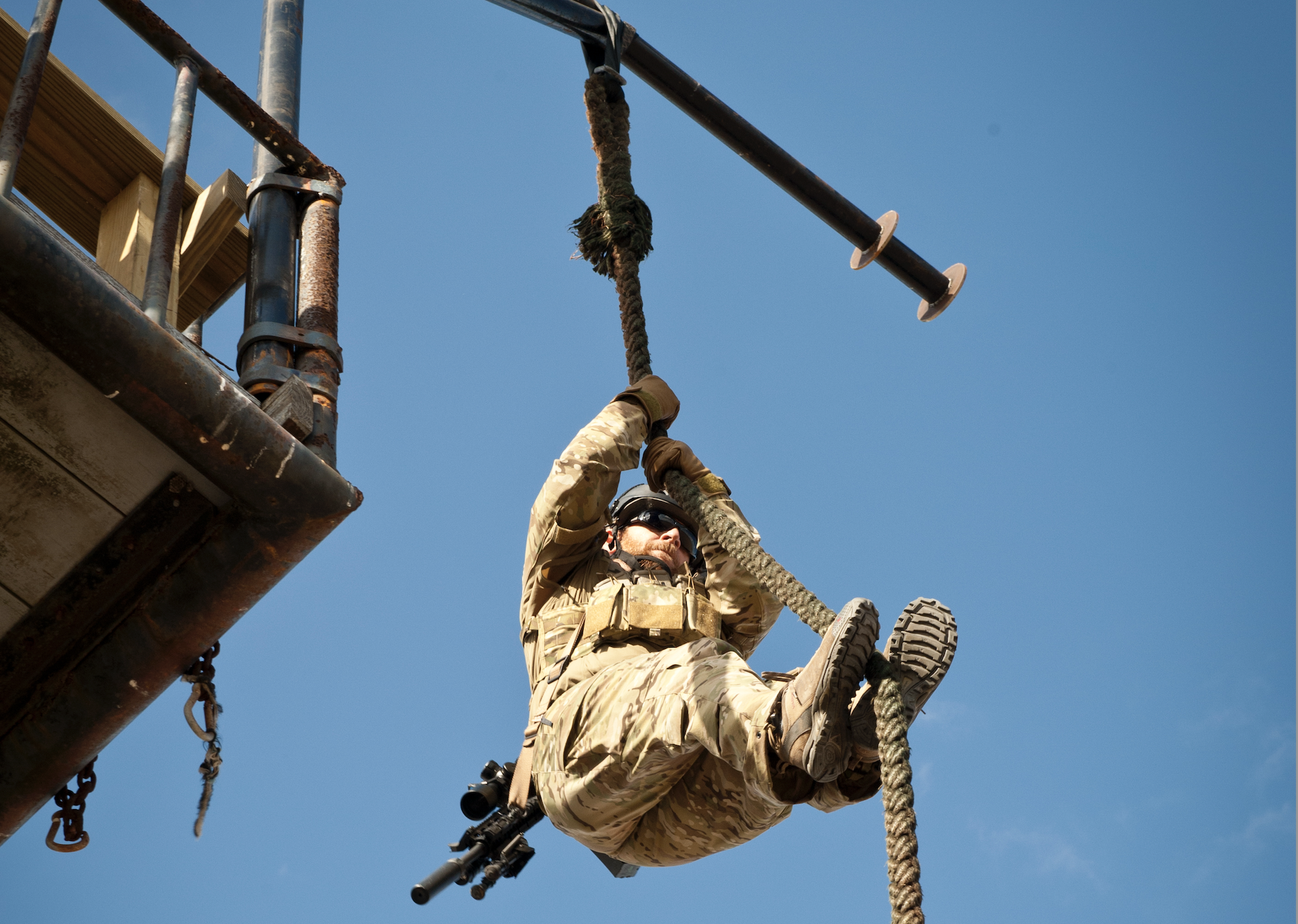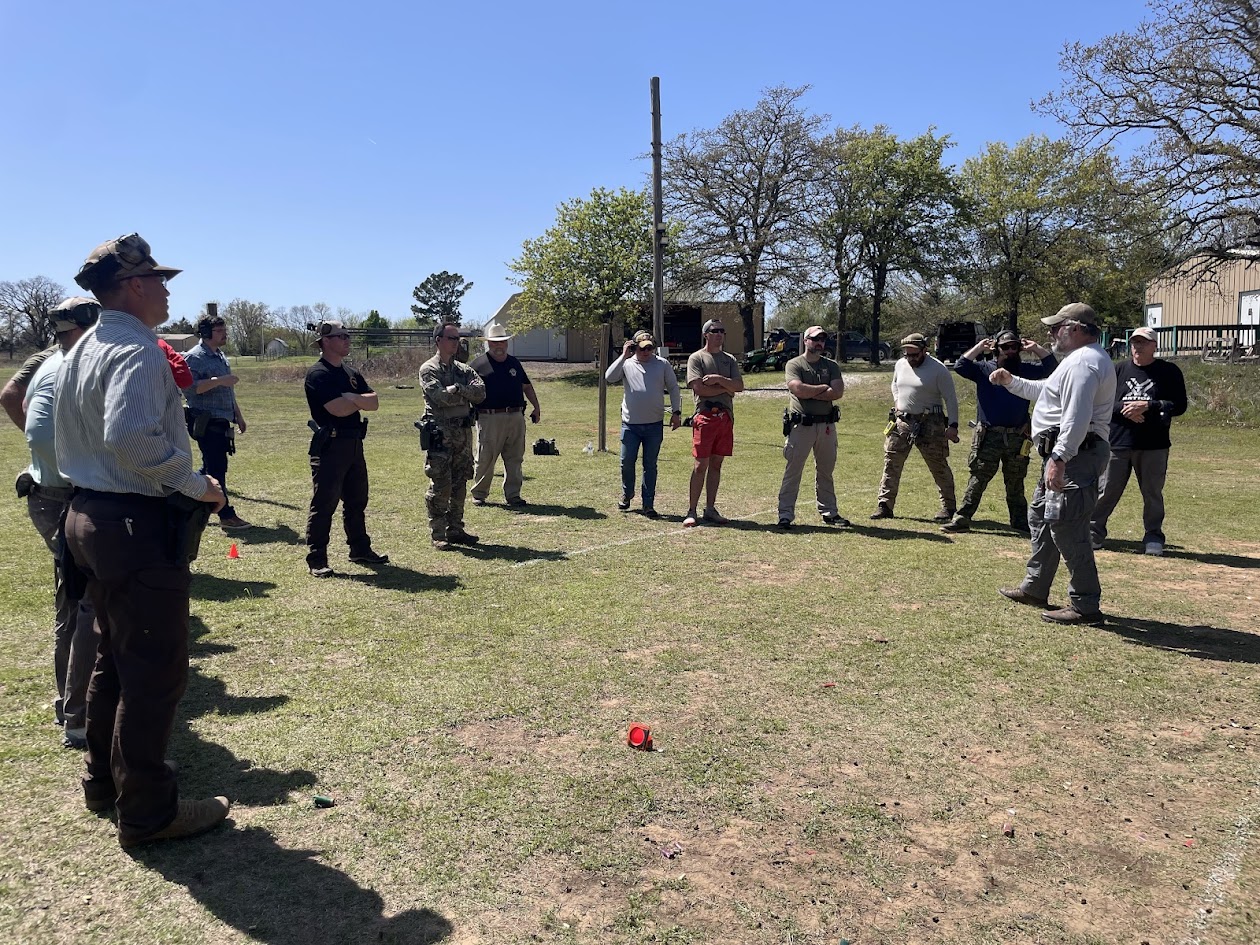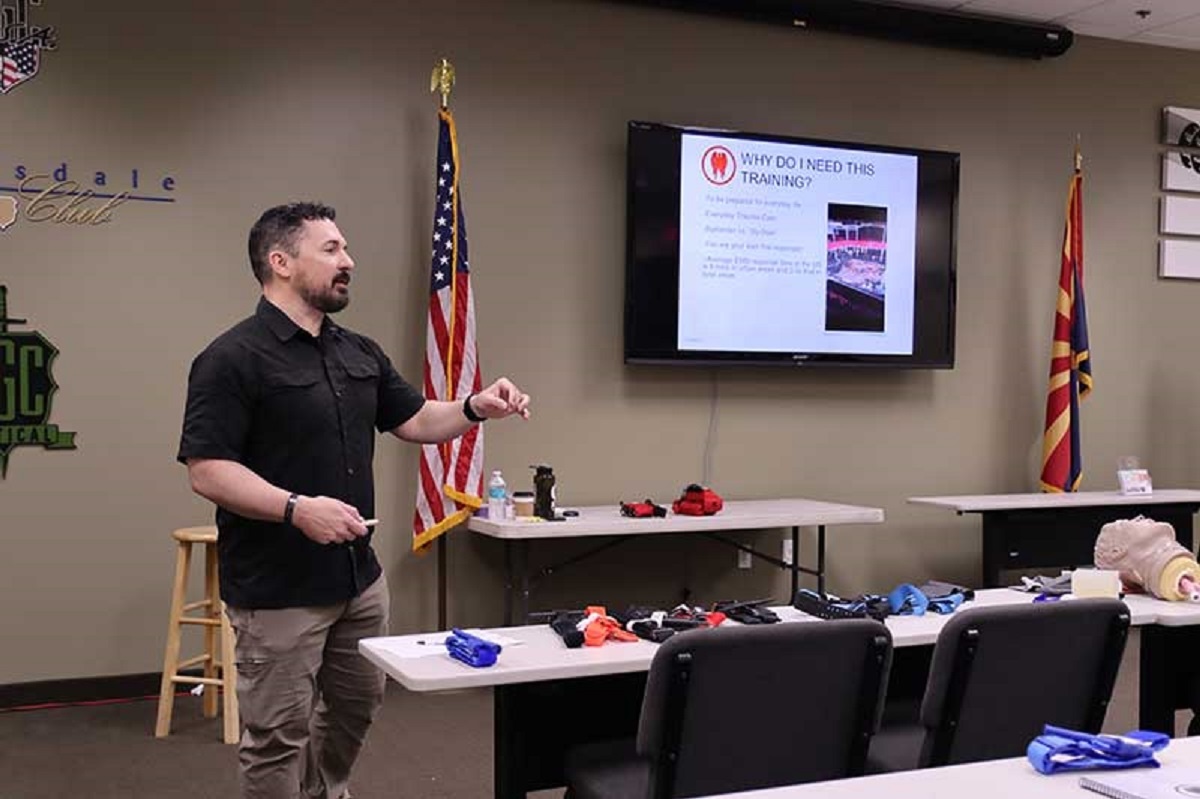
Kerry Davis Instructing
Kerry Davis, of Dark Angle Medical, teaching this material.
In a world where uncertainty is the only certainty, medical emergencies occur without warning. Preparedness can be the difference between life and death. This is where the importance of first aid kits, trauma kits, and basic emergency medical training comes into focus. They act as the immediate response system, providing critical care in the crucial moments before professional medical assistance arrives.
First Aid Kits & Trauma Kits — Know the Difference
A first aid kit and a trauma kit are both important to have in case of an emergency. Each fulfills a different role. A trauma kit can help with life-threatening injuries but isn’t designed to treat minor injuries. The first aid kit can help with minor injuries, but it cannot save a life. While it’s advisable to have both types of kits available and accessible if you opt to carry only one type with you, carry a trauma kit. Minor injuries can wait; life-threatening injuries cannot.
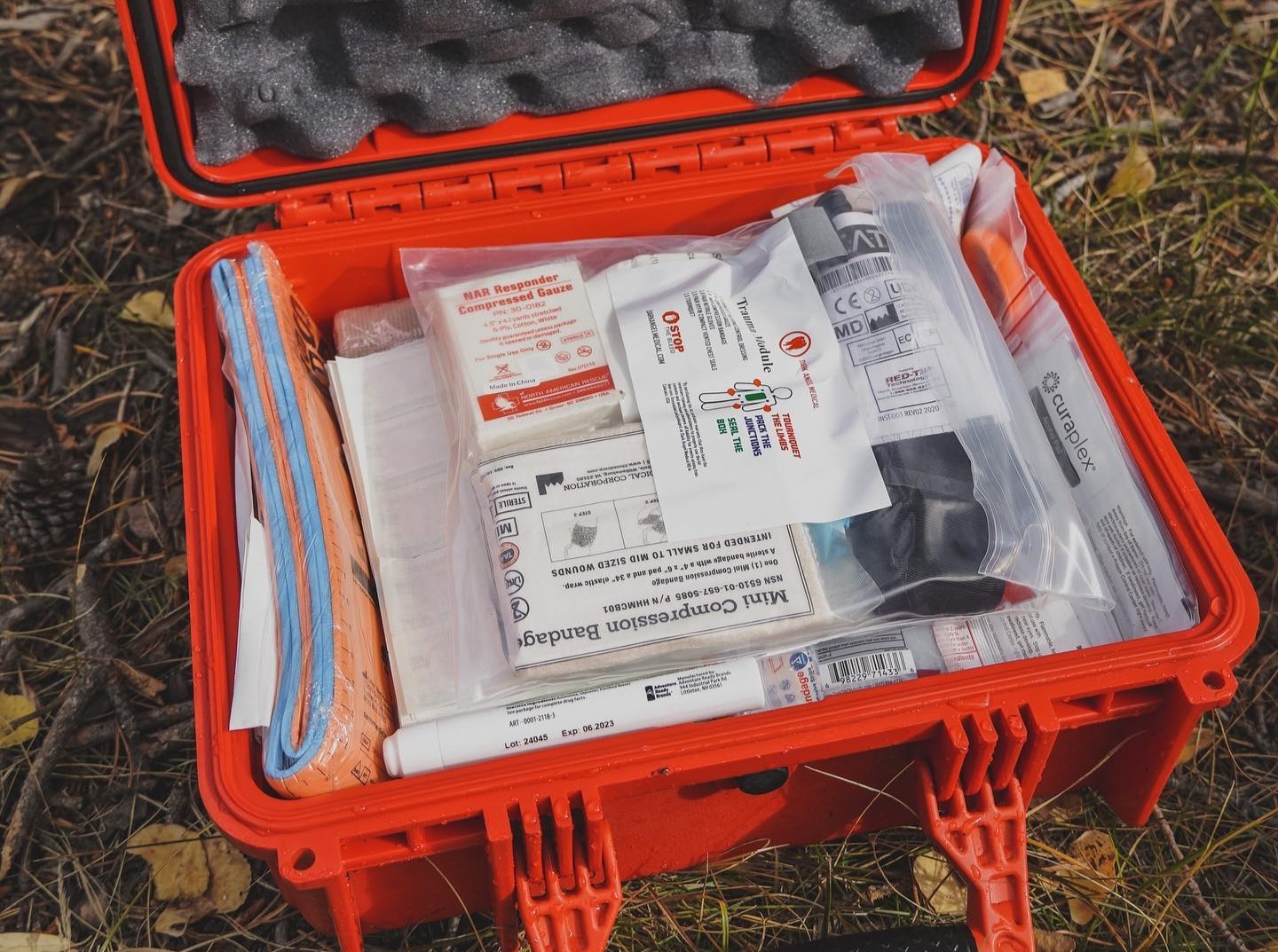
Dark Angel Medical HARD Case is a comprehensive kit that has everything you need to treat minor “boo-boo’s” up to major life-threatening hemorrhages.
A combination kit can help treat both minor and major injuries, but it needs to be well organized. You don’t want to have to dig through components to locate what you need when dealing with a life-threatening injury. Also, with more components comes a bigger kit.

Life’s unpredictability can easily catch us off guard. Be prepared. If you haven’t already done so, get trained and get equipped. (Photo: Kskhh / CC BY-SA 4.0 DEED)
Everyone should carry a trauma kit or, at the very least, a tourniquet (and nitrile gloves for protection from blood-borne pathogens). No matter how fast the response of emergency medical services (EMS) is, bystanders will always be first on the scene. In an active shooter or terrorist incident, emergency personnel won’t reach victims until the threat has been neutralized. You’re your own first responder. It would help if you were prepared and capable of treating life-threatening injuries. Your goal is to stabilize the patient until EMS arrives.
Exsanguination

Patient with blast injuries to both legs. There are two tourniquets on each leg. You might need more than one. (Credit: O’Brien PJ, Cox MW. 2011 Jan 1;2(1). / CC BY-SA 3.0 DEED)
Bleeding caused by a traumatic injury is the leading cause of death of Americans from one to 46 years of age. Up to half of the deaths resulting from hemorrhage occur before reaching definitive care. According to published research, EMS units average seven minutes from the time of a 911 call to arrival on the scene. In rural areas, the median time for EMS personnel to arrive is more than 14 minutes, and almost 10% of the cases must wait for nearly 30 minutes. Someone who is severely bleeding can bleed to death in as little as five minutes. It’s the most preventable cause of death in compressible injuries.
IFAK
The term “IFAK” has made its way into civilian jargon and has led to some confusion. IFAK is the acronym for individual first aid kit. It’s a military term that describes a specialized medical kit designed to manage traumatic injuries in combat situations. An IFAK isn’t the same as a regular first aid kit, which is meant for minor injuries. Soldiers, Marines, airmen, and sailors carry an IFAK to treat themselves or their teammates in case of a traumatic injury. They are not a substitute for professional medical care, but it can save lives until help arrives.
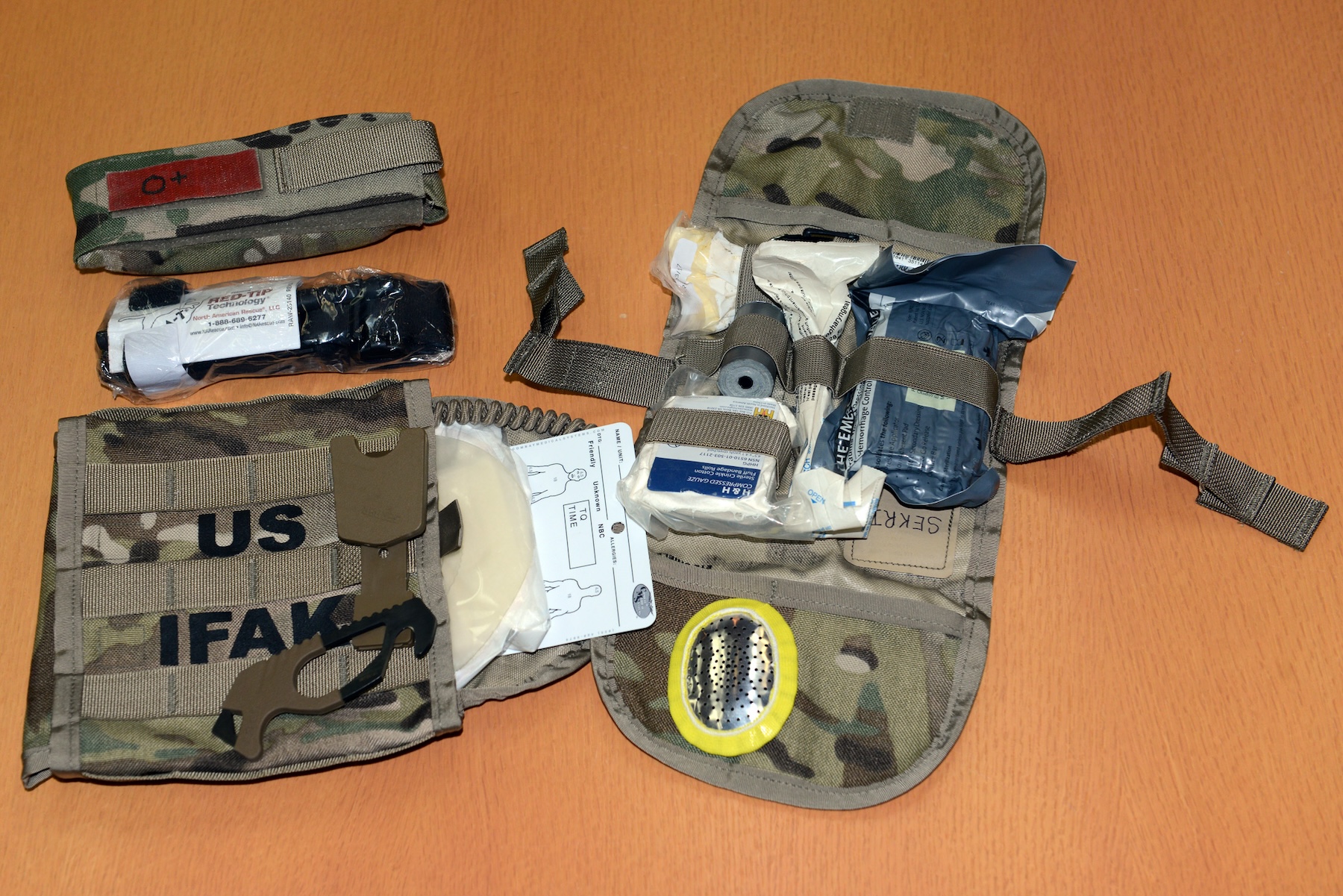
The Army’s issue IFAK. – designed for soldiers to quickly treat life-threatening injuries. It is a trauma kit, not a first aid kit. (Photo: U.S. Army)
A trauma kit and an IFAK are essentially the same thing, as they both contain items that can help save lives in emergency situations. Although there are some basics, the components vary, depending on the intended use and the level of training of the person who carries it.
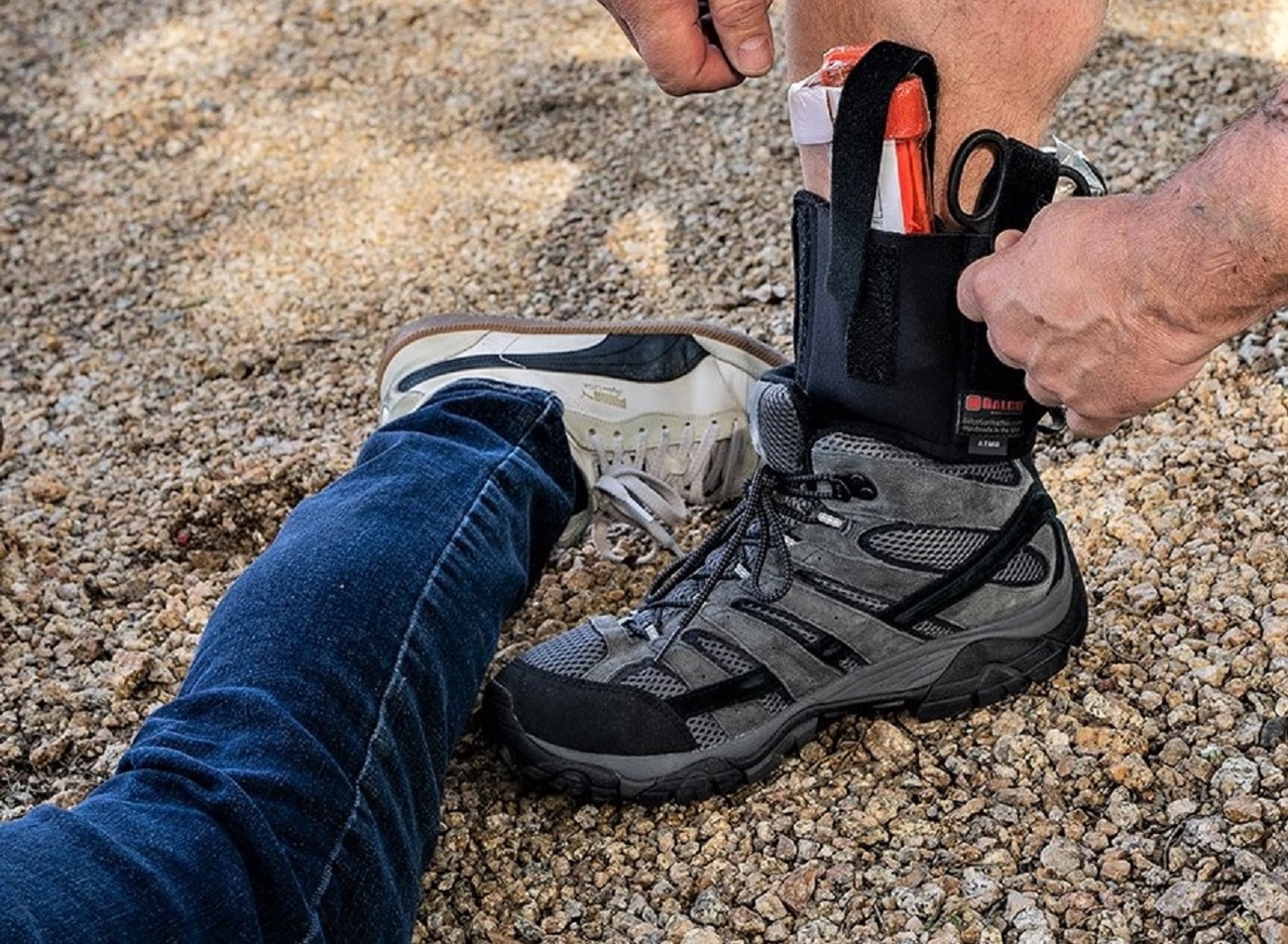
Ankle carry is a popular option for low-profile EDC of med gear. Galco’s Ankle Trauma Medical Kit is one way to do it.
Selecting an EDC Trauma Kit
Selecting an everyday carry (EDC) trauma kit involves making compromises without neglecting essentials. It needs to be lightweight, compact, and easy to use. It needs to be convenient to carry on your person. Having a trauma kit in your vehicle or range bag, while a very good idea, isn’t enough. When you need a trauma kit, you need it quickly. You may not have either the time or the ability to retrieve it from your vehicle or range bag.
That kit should include essential lifesaving medical supplies that are easy to carry and can be quickly deployed in emergency situations. Although size does matter when it comes to EDC, you need to be able to “stop the bleeding and start the breathing.”
You don’t need to have a mobile trauma room in your kit to save a life. The following are recommended as a minimum:
- Tourniquet(s)
- Hemostatic Gauze
- Pressure Bandage
- Chest Seals
- Nitrile Gloves

A Combat Application Tourniquet® and Fieldcraft Survival Tourniquet Holder. If you only carry one medical device, it should be a tourniquet (and nitrile gloves for your protection).
Emergency Medical Training — A Necessity, Not an Option
Possessing the right tools is just one aspect of the equation. The effectiveness of your equipment is only as good as your ability to use it. The heat of an emergency isn’t the time to learn.
Comprehensive emergency medical training should encompass a full range of lifesaving skills. Much like shooting, these skills can diminish over time. We all understand the importance of regular firearms training, yet medical training often falls by the wayside. The reality is that you’re more likely to need medical skills than your firearm.
Medical skills are indispensable for handling everyday emergencies. They can occur anytime, anywhere, and to anyone. Some may be life-threatening and demand immediate action to save lives and prevent further harm. Others may be less urgent but still require appropriate care and attention.
Armed with medical skills, you can identify the signs and symptoms, assess the situation and the needs of the patient, provide first aid or basic life support, and summon professional help if necessary. You can confidently and effectively respond to any emergency that comes your way. Having some basic medical knowledge and skills can make a significant difference in an emergency.
Get trained and get equipped!


 (No Ratings Yet)
(No Ratings Yet)
